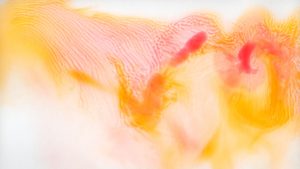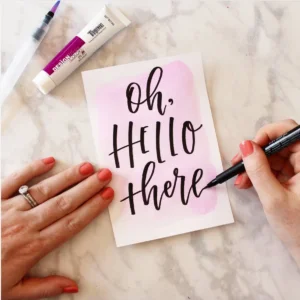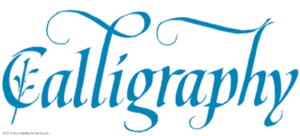Calligraphy is a craft which empowers you to layout each letter beautifully with the help of a broad tipped tool, brush or other calligraphy tools. Using right calligraphy pens, we can our writing more fun and visually appealing for the watcher’s eyes.
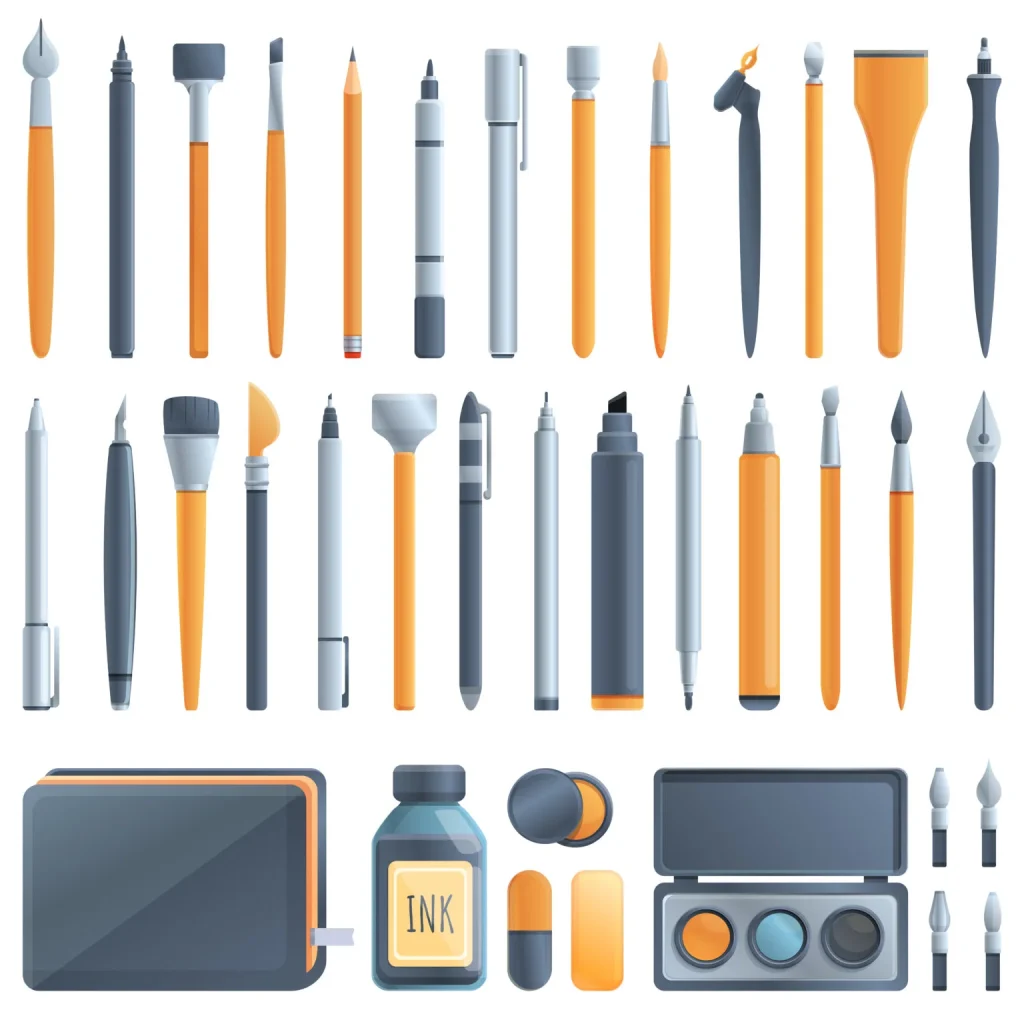
History
The art of calligraphy is not an invention of the modern world but is something which has been practised since the ancient civilisation across the world. Calligraphy enables you to convert simple letters into a piece of art through careful precision and process. Calligraphy has been used to decorate various texts like religious scripts, leaves, typography, invitations and more.
If you’ve ever felt impressed or intimidated by this satisfying work of art and are keen to try your hand, then you’re in the right place! Here is a compilation of the essentials and our favourite tools to start your calligraphy journey effortlessly.
Also read 12 Types of Figurative Language with Examples
Factors other than Calligraphy Pens
There are some factors that determine the quality of your calligraphy work and performance. So here are a few important factors that might affect your calligraphy:
- the script or font being used
- the calligraphy pen or the various tools
- the type of paper used for calligraphy
Calligraphy Pens, Brushes and Other Tools
The calligraphy pens can be divided into following broad categories-
Dip pens
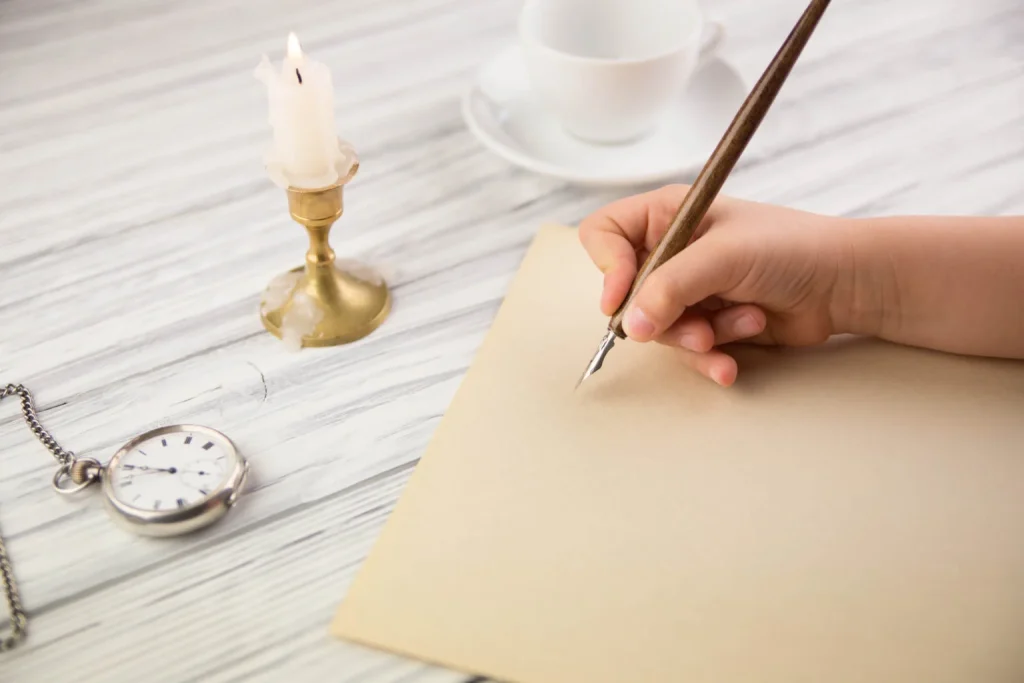
The first division, dip pens as the name suggests, require to be frequently dipped into the inkwell to continue writing. Dip pens have a minor advantage over the fountain pens as it provides an option between the standard straight style and the oblique style. Between the two options, oblique style is much easier to use than the latter. The oblique calligraphy pen allows you to exercise even pressure on both tines of the nib, which is usually difficult for the right-handed person.
Fountain Pens
Our second option is fountain pens, which are a little messy to use but are an excellent option for beginners. They are easy to use and work with. Here you don’t have to frequently dip your nib in the inkwell to continue writing. Both types have their pros and cons; Both types of calligraphy pens are good to go, you can choose from either depending upon your preference and desired calligraphy style or font for the content.
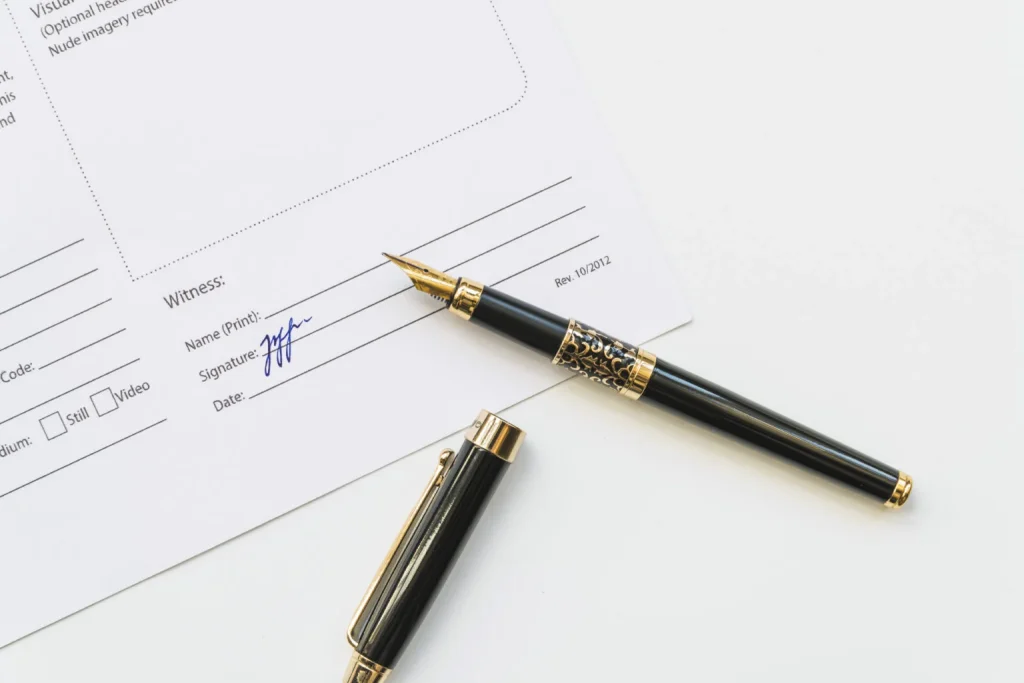
*tines of the nib: two sides of the nib separated by a slit.
Some other calligraphy pens that you can try are:
Chisel nib
We especially use this type of nib for a very elegant looking handwriting. The nib of such pens is wedge-shaped, having both a narrow edge and a broad edge. As a result, you’ll be able to create a broader and narrow stroke depending upon the way you hold the pen. You can create a highly artistic and energetic style of lettering by holding your nib at the exact angle at all times. The chisel nib should always be held at a 45° angle, and it should not be changed or altered while writing.
Round nib
The round nib is a more generally used nib. Majority of the pens, whether it is a fine line, ballpoint or felt-tip pens have a round tip having varied stroke width. The round nib pens don’t need to be held at a specific angle and can be used at any angle or style you like; the stroke throughout will remain the same. This allows you to write long length scripts without stopping or worrying about the angle. Hence it is more preferred.
Brush calligraphy pens
Brush pens as the names suggest are markers with a tapered super flexible nib, which appears and feels like a paintbrush. The tip of your brush pen is sensitive to pressure if you want thick strokes than apply pressure and if you want light strokes to hold it lightly with no to least pressure exertion instead of holding the brush pen up vertically try to keep it more to the side. While doing calligraphy with brush pens, it is always preferred to have thick strokes while moving down and thin strokes while going up.
Quill pens
Quill pens are rarely used for calligraphy because they are hard to work with and handle. They are usually used to write medieval text. They help in creating exceptionally sharp strokes and higher flexibility than a steel pen.
Also read English Story Writers
Other Requirements
There are other tools also that you require to get the best results and practice.
Right Ink for Calligraphy Pens
Here are the guidelines to choose the perfect ink for calligraphy. If you are starting calligraphy new, beginner then go for the dip pens. The dip ink pens are easy to find and use relatively inexpensive too.
Also, see which one really sets on your hand and gives a satisfying performance. You can also go for fountain pens that come with ink cartridges. But keep in mind to do some research on those ink cartridges to see options manufactured by the company; this will help you find the right ink producing high-quality work.
Also read How to learn creative writing in 6 simple steps?
Calligraphy Paper
Selecting the right paper is key to perfect calligraphy. The paper should be bleed proof it’s an absolute must. Look for thicker paper that doesn’t wrinkle easily. The paper shouldn’t be too smooth, slippery or rough; if it’s too smooth and slippery, the characters won’t set and, if it’s too rough, the nib of the writing tool will get damaged or even break.
Pencils and erasers are necessary to draw the guidelines. If you’re a beginner, then you should definitely begin by drawing guidelines.
That’s enough information now grab your tools and get on to create those beautiful letters.
Stay on board with us for more such fun articles!
